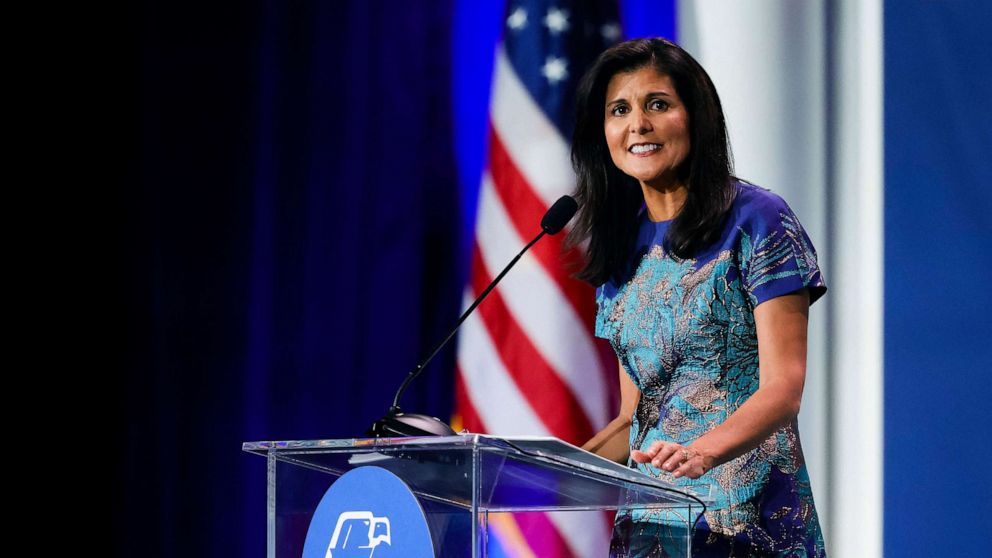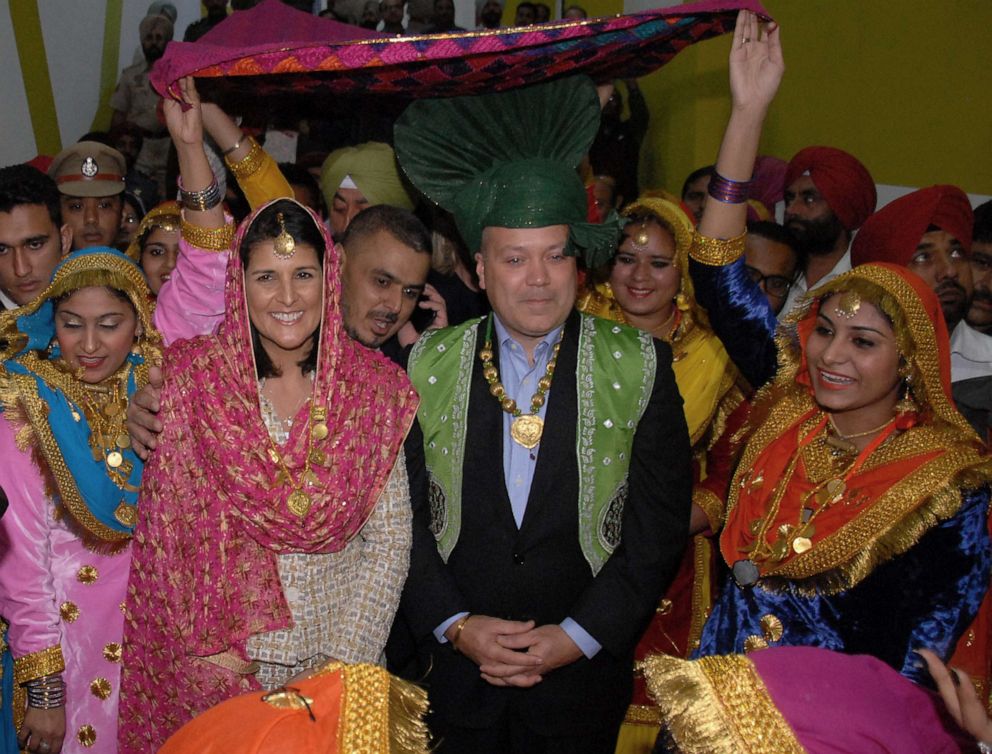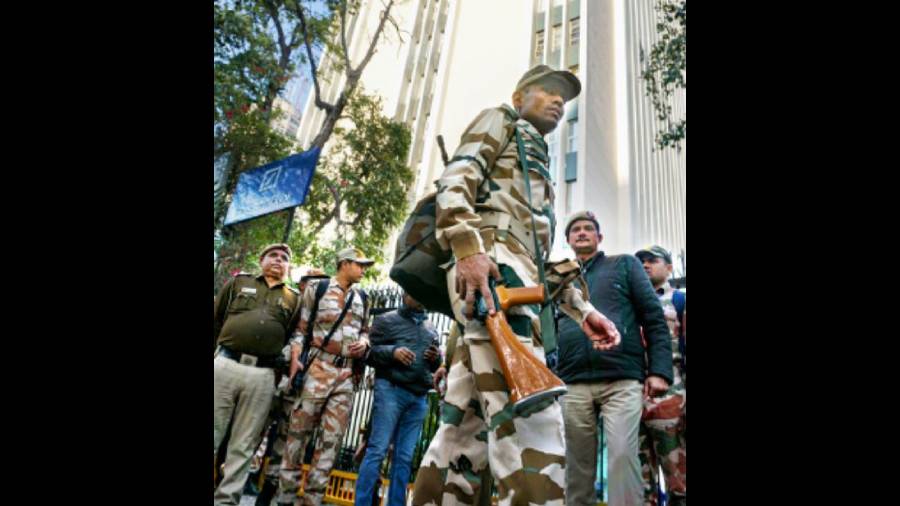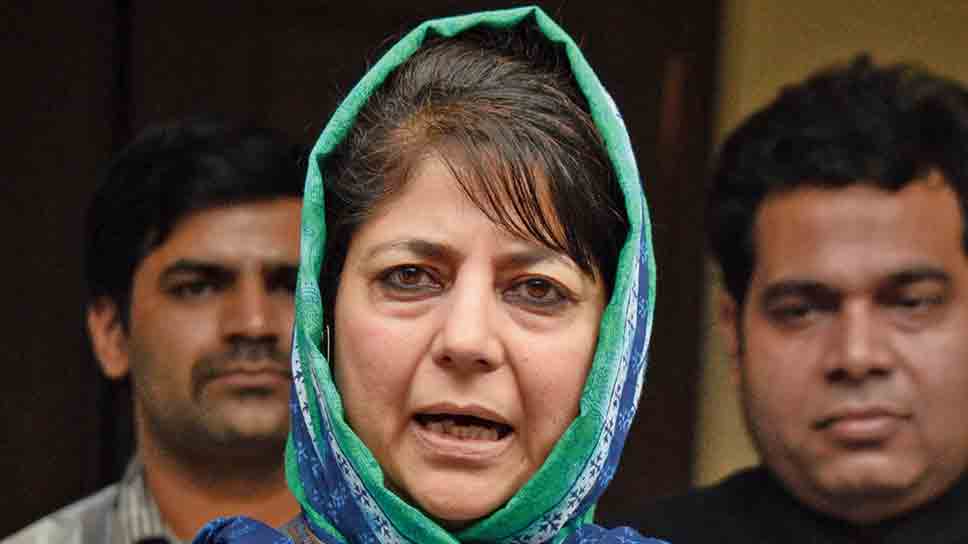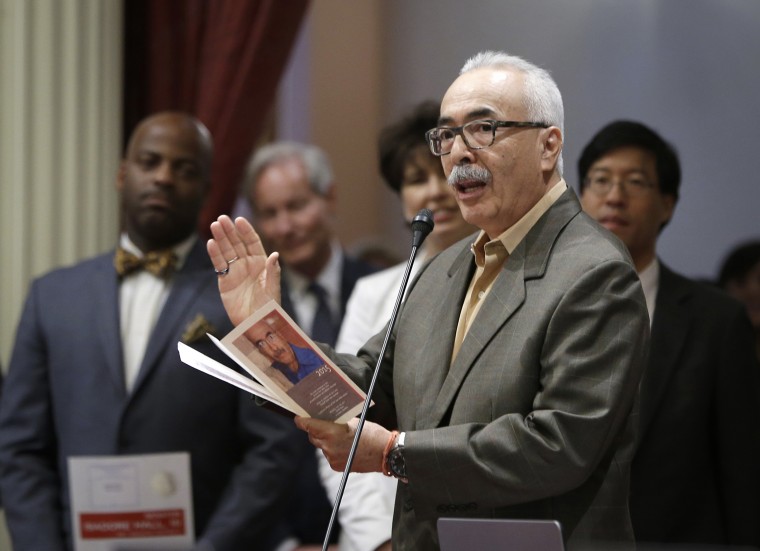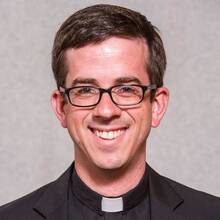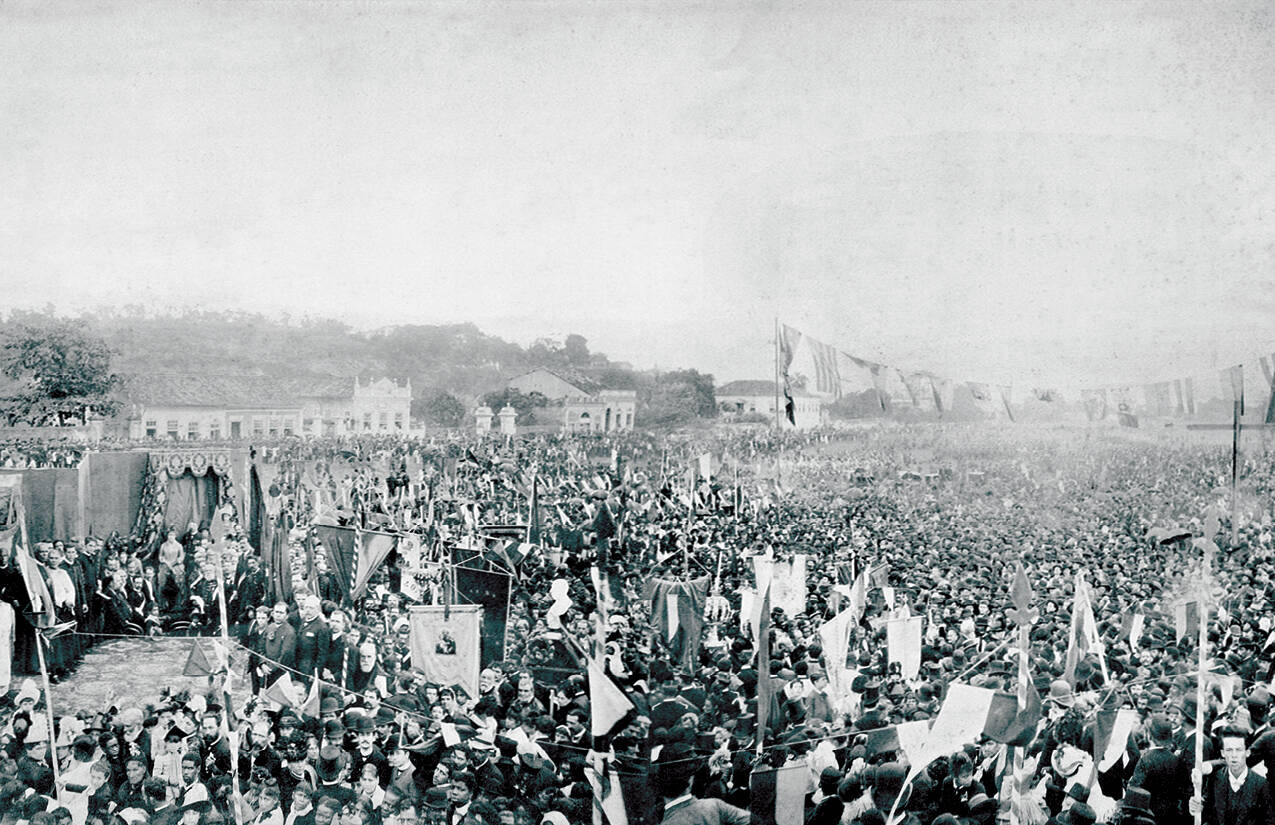 Slavery and the Catholic Church: It’s time to correct the historical record
Slavery and the Catholic Church: It’s time to correct the historical record
Christopher J. KellermanIt was the morning of May 24, 1888, and a large, ethnically diverse crowd waited in the Sala Ducale of the Apostolic Palace in Rome for the pope to arrive. Led by Cardinal Charles Lavigerie, the French missionary archbishop of Algiers, the group had traveled to Rome on a double pilgrimage from North Africa and from the Diocese of Lyon, France. The pilgrims had earlier entered St. Peter’s Square with camels and a special gift for the pope: a pair of gazelles wearing silver collars inscribed with Latin verse.
Shortly after noon, the smiling Pope Leo XIII and his entourage entered the Sala Ducale to sustained applause from the pilgrims. It was a special year for Leo: the golden jubilee of his ordination to the priesthood. Preparations had been underway throughout nearly the entirety of 1887 for the yearlong celebration in which the pope would receive thousands of gifts from all over the world and greet an abundance of well-wishers.
Among the pilgrims who traveled to Rome during Leo’s jubilee, however, this group was unique, and its uniqueness was indicated by the 12 men strategically placed at the front of the crowd. These 12 African men had been enslaved before their freedom was purchased by Lavigerie and his missionaries. They were at the head of the group because today’s audience was an unofficial celebration of the release of Pope Leo’s encyclical on slavery.
On Feb. 10, the Brazilian statesman and abolitionist Joaquim Nabuco had met with Leo in a private audience and asked the pope to write the encyclical. Brazil was on the cusp of abolishing slavery, which would make it the last country in the Western Hemisphere to do so. Due to the Brazilian princess regent Isabel’s devout Catholicism, Nabuco thought a letter from the pope condemning slavery might embolden her to support abolition more aggressively. Leo was happy to oblige, and the news about this antislavery encyclical began to spread.
Upon hearing of it, Cardinal Lavigerie wrote to the pope and asked him to include something about the continuing presence of slavery in Africa. The anti-abolition prime minister of Brazil, however, was not happy with the news from Rome, and he successfully pressed the Holy See to delay the issuance of the encyclical.
Despite the prime minister’s back-channel machinations, Brazil’s parliament passed the abolition bill, and it was signed into law by Isabel on May 13. When the encyclical, titled “
In Plurimis,” was released to the public on May 24, it was dated May 5, as if Pope Leo wanted it on the record that he had supported Brazilian abolition before it became the law of the land. Nevertheless, this late release intersected perfectly with Cardinal Lavigerie’s pilgrimage. The day before the audience, the 12 formerly enslaved men had been given the chance to read the document. Though other encyclicals of Leo would come to overshadow this one, it surely was one of his most theologically significant. For with “In Plurimis” and his follow-up encyclical, “
Catholicae Ecclesiae,” Leo XIII did something astounding: He changed the church’s teaching on slavery. The Catholic Church, for the first time in its history, had finally gotten on board with abolitionism.
Divergent Explanations
That revolutionary day when Leo XIII became the first pope to condemn slavery is not well known by many Catholics and is rarely mentioned in scholarship related to the church’s history. This is not terribly surprising. The church’s historical engagement with slaveholding is very complex, and it is also widely misunderstood. Even in the past several years, well-intentioned Catholic writers have published accounts of the church and slavery that are full of inaccuracies.
Often, those inaccurate accounts are written to defend the church in some way. In 2005, for example, Cardinal Avery Dulles wrote a book review in First Things claiming that the popes had denounced the trade in African slaves from its very beginnings and yet had never condemned slavery as such, retaining a continuity of teaching that always allowed for some “attenuated forms of servitude.” Other apologists have taken a more absolute position: The church has always been against slavery itself. Both these lines of argumentation seem to agree on two central assertions: The popes always condemned the trade in African slaves, and the church’s teaching did not change.
Defending the church, either in its reputation or its doctrinal continuity, can be praiseworthy. But when it comes to the history of the Catholic Church and slaveholding, this posture of defense has been deeply damaging. It has unnecessarily led to confusion around the church’s history with slaveholding, and that confusion has helped to prevent the church from reckoning with a troubling history whose consequences are still present in our world.
The history of the church was nothing close to a steady, if interrupted, march to eliminate slavery.
And yet it was once widely known, and still is among historians of slavery today, that the Catholic Church once embraced slavery in theory and in practice, repeatedly authorized the trade in enslaved Africans, and allowed its priests, religious and laity to keep people as enslaved chattel. The Jesuits, for example, by the historian Andrew Dial’s count, owned over 20,000 enslaved people circa 1760. The Jesuits and other slaveholding bishops, priests and religious were not disciplined for their slaveholding because they were not breaking church teaching. Slaveholding was allowed by the Catholic Church.
One of the reasons the church’s past approval of slaveholding is so little known among the general Catholic population today is that the very popes who reversed the church’s course on slavery and the slave trade also promoted that same inaccurate narrative that defended the church’s reputation and continuity—even, intentionally or not, at the cost of the truth.
Condemning the Atlantic Slave Trade
The shifts began quietly. In 1814, Pope Pius VII, at the request of Great Britain prior to the upcoming Congress of Vienna, privately sent letters to the kings of France and Spain asking them to condemn the slave trade. At this time in history, condemning the trade did not equate to condemning slavery itself. “The slave trade” meant the transatlantic shipping of enslaved persons from the African continent to the New World. Hence, the slaveholding U.S. President Thomas Jefferson, prior to signing an anti-slave-trade bill into law in 1807, saw no contradiction in referring to the trade as “those violations of human rights” against “the unoffending inhabitants of Africa” all while continuing to keep Black descendants of the trade’s immediate victims enslaved. Britain itself outlawed the trade in 1807, but slaveholding remained legal afterward in parts of its empire. In the same vein, Pius’s private letters referred only to the trade, not to slavery itself
.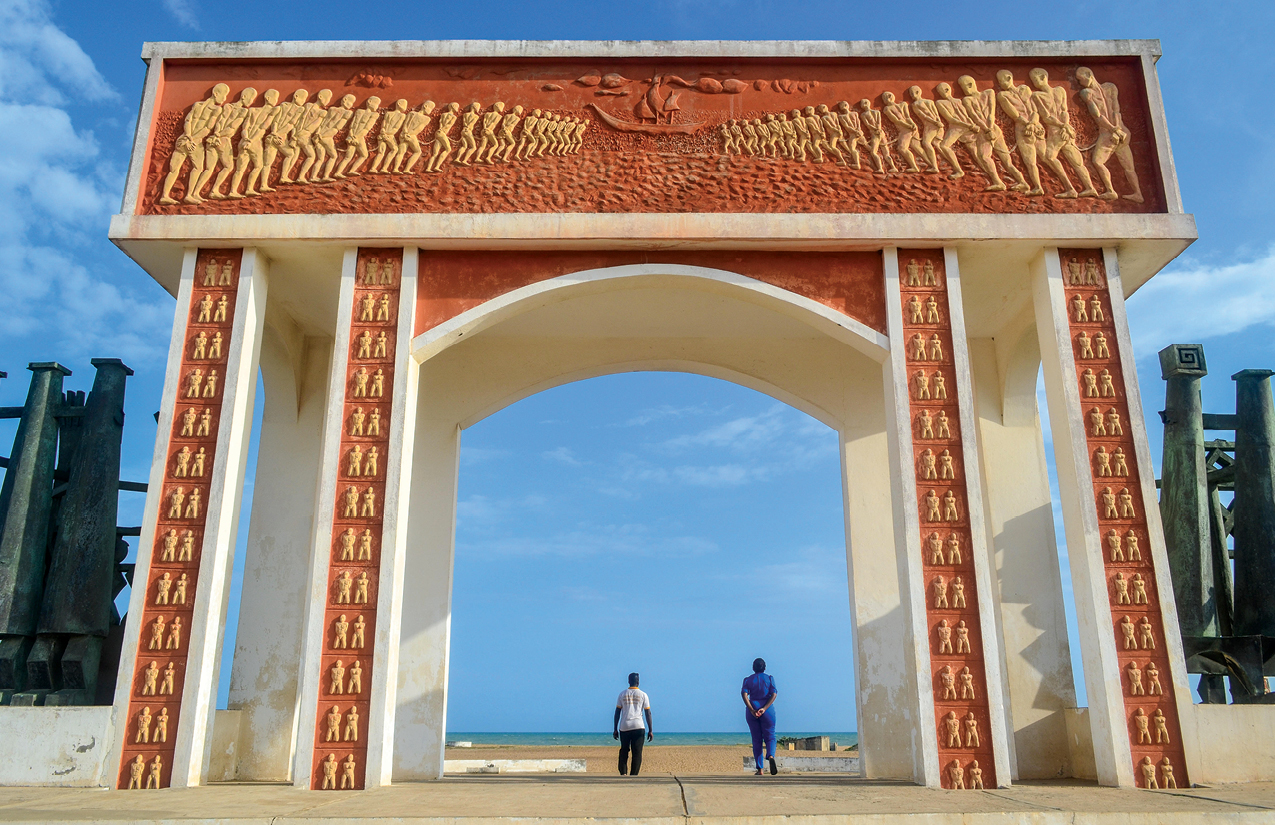
The Door of No Return is a memorial in Ouidah, a former slave trade post in Benin, a country in West Africa. (Alamy)
The papacy’s condemnation of the trade became a public one in 1839 with Gregory XVI’s bull “In Supremo Apostolatus.” Though the bull came, once again, at the request of Great Britain, Gregory deserves praise for being the first pope to publicly condemn the Atlantic slave trade after nearly four centuries of its operation. The bull was a strong one in many ways, blaming the advent of the trade on Christians who were “basely blinded by the lust of sordid greed.” And yet, as with Pius VII, Gregory did not speak directly on the issue of whether slaveholders in the Americas should free their enslaved people, something he easily could have included.
So when some abolitionists in the United States greeted Gregory’s bull as a fully antislavery document, Catholic bishops like John England of Charleston, S.C., and Francis Patrick Kenrick of Philadelphia argued that the only thing the bull did was precisely what the United States had already done: ban participation in the international slave trade. Gregory corrected no one’s interpretation, and so Catholic slaveholding was able to continue in the United States and elsewhere, arguably without disobedience to church teaching.
The Catholic Church approved, multiple times and at some of its highest levels of authority, of one of the gravest crimes against humanity in modern history.Why Gregory was the first pope to publicly condemn the trade is an agonizing and perhaps unanswerable question. The arguments that Gregory used to support his condemnation had been articulated by countless theologians and activists over the previous few centuries, including by the representatives of Black Catholic confraternities who protested the trade before the Holy See in the 1680s. Any pope since at least the 1540s, when the
Dominican friar Bartolomé de las Casas changed his opinion on the trade after researching its injustices, could have issued nearly the same bull as Gregory did. Gregory was just the first to choose to do it.
Rewriting History
Unfortunately, Gregory also provided a narrative in his bull that did not present a truthful portrait of the church’s engagement with the trade. Pius VII had made an ambiguous and dubious claim that the church had helped to abolish much of the world’s slavery and that the popes had always “rejected the practice of subjecting men to barbarous slavery,” but Gregory expanded upon this claim in detail. He wrote that in ancient times, “those wretched persons, who, at that time, in such great number went down into the most rigorous slavery, principally by occasion of wars, felt their condition very much alleviated among the Christians.” He claimed that slavery was gradually eliminated from many Christian nations because of “the darkness of pagan superstition being more fully dissipated, and the morals also of the ruder nations being softened by means of faith working by charity.”
In Gregory’s telling, this steady Christian march toward eliminating slavery from the earth was then interrupted by greedy Christians who reduced Black and Indigenous peoples to slavery or who bought already enslaved persons and trafficked them.
Gregory claimed that the papacy had been opposed to these new situations of enslavement: “Indeed, many of our predecessors, the Roman Pontiffs of glorious memory, by no means neglected to severely criticize this.” As evidence for this statement, he cited the bulls prohibiting the enslavement of Indigenous peoples in the Americas written by Paul III, Urban VIII and Benedict XIV, as well as the then recent condemnations of the trade by Pius VII. He also included a curious reference: a 1462 letter of Pius II that, Gregory wrote, “severely rebuked those Christians who dragged neophytes into slavery.”
This narrative was deeply misleading. The history of the church was nothing close to a steady, if interrupted, march to eliminate slavery. Rather, the early church embraced slaveholding both before and after Christianity became the official religion of the Roman Empire, and the medieval church expanded the ways by which someone could become enslaved beyond those allowed by pagan Rome—allowing, for example, that women in illicit relationships with clerics could be punished with enslavement. Theologians like St. Augustine and St. Thomas Aquinas theologically defended the practice of keeping humans enslaved, and St. Gregory the Great gave enslaved people to his friends as gifts.
Moreover, while it was true that the popes condemned the enslavement of Indigenous peoples in the Americas, the trade in African slaves was permitted and encouraged by a series of popes from Nicholas V, who died in 1455, forward. Gregory XVI mentioned none of this, instead seeming to suggest that Pius II’s letter meant the popes’ hands had always been clean with regard to the trade. But Pius II’s condemnation had nothing to do with the general Portuguese trade in enslaved Africans; it instead concerned a particular instance of Catholic converts being kidnapped. Nicholas V’s bulls had specified that only non-Christians could be seized and enslaved. Pius II’s letter was in accordance with Nicholas’ permissions, not against them.
While it was true that the popes condemned the enslavement of Indigenous peoples in the Americas, the trade in African slaves was permitted and encouraged by a series of popes.
The inaccuracy of this narrative did not go unnoticed. The Portuguese consul in Brazil scoffed at the bull, writing that “its doctrine has been most rarely sent forth from the Palace of the Vatican, for it is well known that Nicholas V…and Calistus III…approved of the commerce in slaves” and that Sixtus IV and Leo X also approved of the trade even after the letter of Pius II. He noted that Scripture did not condemn slavery and that the popes had previously condemned only the enslavement of the Indigenous peoples of the Americas.
Erroneous as Gregory’s narrative may have been, he was not pulling it out of thin air. Some British and American abolitionist historians had been promoting such a narrative for decades in an attempt to argue that Christianity had historically been an antislavery religion. Just five years prior to Gregory’s bull, for example, the American historian George Bancroft falsely claimed that the slave trade “was never sanctioned by the see of Rome.” It is possible, then, perhaps even likely, that Gregory XVI honestly believed this narrative to be accurate. Nevertheless, it was wrong, and its publication in a papal bull meant that it would spread more widely.
An Abolitionist Church
When Leo XIII condemned not merely the slave trade but slavery itself on that exciting day in 1888, it may have not been too shocking to most people who heard the news. Slavery was now legally abolished in the Christian world; why would the church not be opposed to it? And yet both Nabuco and Lavigerie understood that Leo was making history. The condemnations of slaveholding that Leo issued in 1888 and 1890 did not represent merely a change in policy, which itself would have been momentous enough. The change was a theological one. What the Holy Office only a couple decades prior had proclaimed was “not at all contrary to natural and divine law” was now declared by Leo to be contrary to both.
Leo even used the arguments of abolitionists to make his case. There was a certain set of theological propositions that abolitionist theologians had been promoting for centuries, from as early as St. Gregory of Nyssa to the 19th-century abolitionists Maria Stewart, Frederick Douglass and the French Catholic journalist Augustin Cochin. These propositions had been criticized or ignored by most Catholic theologians who wrote in favor of slavery, but Leo’s documents were filled with them. His successors would repeat and even deepen those abolitionist ideas in their own antislavery documents over and over again.
And yet, bold and praiseworthy as Leo’s abolitionist encyclicals were, he further concealed the truth about church history. Ignoring centuries of papal, conciliar and canonical approval of slavery, Leo strengthened Gregory’s narrative of a long antislavery march through history and inaccurately listed additional popes who had supposedly condemned the trade in African slaves and even slavery itself—including one of the popes who had renewed Nicholas V’s permissions.
What the Holy Office only a couple decades prior had proclaimed was ‘not at all contrary to natural and divine law’ was now declared by Leo to be contrary to both.
As with Gregory, Leo may sincerely have believed these falsehoods to be true. But far from being officially corrected, this erroneous papal narrative has survived online and in print. Even St. John Paul II, who apologized for the participation of Christians in the slave trade, repeated the false claim that the trade had been condemned by Pius II.
The Need for Reckoning and ReconciliationThe Catholic Church’s change in teaching regarding slavery was striking. While that change raises important theological questions about ecclesiology and doctrinal development, we must reject the temptation to jump straight to those questions without also doing the hard and painful work of reckoning with this history. It is morally imperative that we admit and deal with a series of difficult truths: that the Catholic Church approved, multiple times and at some of its highest levels of authority, of one of the gravest and longest-lasting crimes against humanity in modern history—and did not withdraw that approval for nearly 400 years.
During the full history of the Atlantic slave trade, roughly 12.5 million African men, women and children were forced onto ships to be sent across the ocean to a life of forced labor. Almost two million did not survive that journey. The survivors and millions of their descendants, all human beings made in God’s image, were the chattel property of other humans who had the power to whip them, force them to work unpaid their entire lives and keep their children enslaved as well.
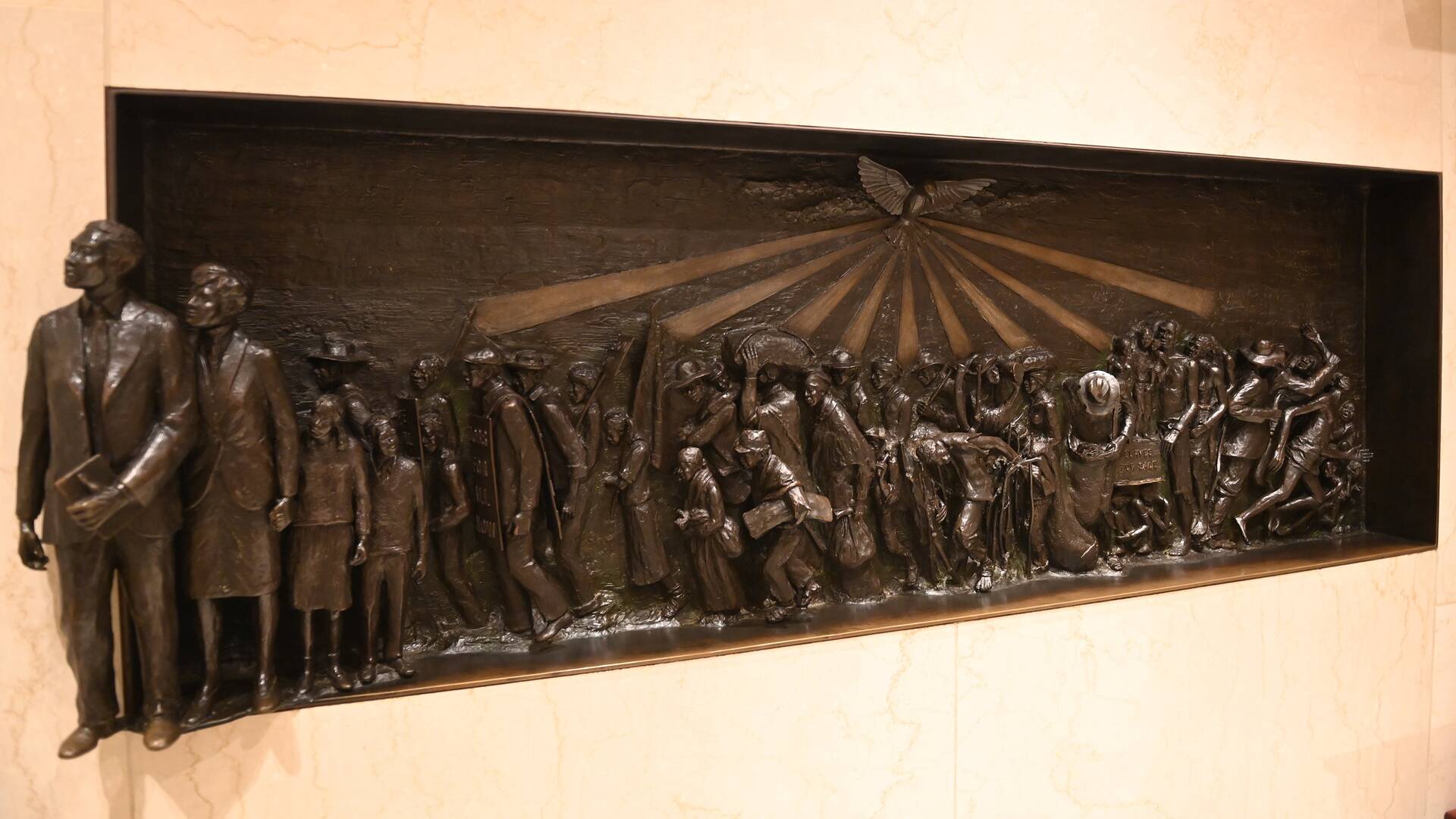
A bas-relief sculpture on the wall of the Our Mother of Africa chapel at the Basilica of the National Shrine of the Immaculate Conception in Washington, D.C., depicts the African American experience from slavery to emancipation and the civil rights movement.
(CNS photo/Patrick Ryan for the National Black Catholic Congress via Catholic Standard)
As Catholics, we must consider the human beings affected by the church’s actions. How many people died chained to the disease-ridden hulls of ships because the popes before Gregory XVI repeatedly failed to take a bold stand? How many enslaved people were sexually assaulted because they were placed in a legal position allowed by the popes before Leo XIII that left them vulnerable to such abuse? How many enslaved people fell away from the Catholic faith because priests told them that the oppression they were experiencing was occurring with the approval of Holy Mother Church?
A process of reconciliation is needed. Our church needs to admit these past injustices.
As part of that reconciliation process, we need to do our best to repair the harm caused by the injustices our church perpetuated. Anti-slave-trade Catholic theologians of the 16th century were already writing about the need to make restitution to enslaved people. One 17th-century Capuchin even wrote about the eventual need for the descendants of slaveholders to make restitution to the descendants of the enslaved. Some religious communities have taken steps toward reconciliation, including the Jesuits of the United States, but at some point the Vatican will have to do the same. Perhaps there could be an international commission, or maybe a synod. When we consider the millions of lives the trade harmed and still harms to this day, it is difficult to imagine even the convoking of an ecumenical council as being too extreme a remedy.
Pope Leo XIII righted one significant wrong when he changed the Catholic Church’s teaching on slavery in 1888, and the popes since then should be lauded for their continual denunciation of slavery, slavery-like economic practices and contemporary human trafficking. But as with every unconfessed and unaddressed sin, harm remains. It takes courage to pick up that examination of conscience and pray with it. It takes courage to enter the confessional, say what needs to be said and commit to doing what needs to be done. And yet the justice and love of God demand such steps.







